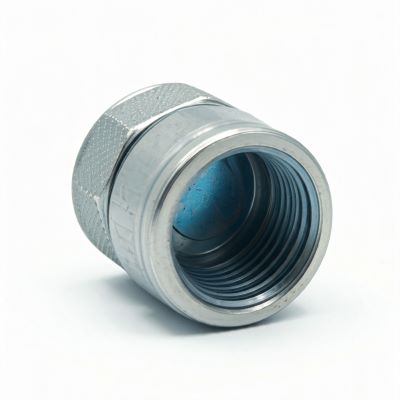Air couplers are essential components in pneumatic systems, providing a reliable connection between air hoses and tools. By selecting the right air coupler, you can significantly enhance tool performance, boost productivity, and extend the lifespan of your equipment.
What are air couplers?
Air couplers act as intermediaries, facilitating the flow of compressed air between hoses and pneumatic tools. They ensure a secure and efficient connection, preventing leaks and minimizing pressure loss.
How Couplers Impact Airflow and PSI
The right air coupler ensures that the air pressure (PSI) flowing through your tools is consistent, which is vital for their performance. If the coupler restricts airflow, tools will not operate at their full capacity, leading to inefficiency and longer job times.
Types of Air Couplers
1. Industrial: Designed for heavy-duty applications in manufacturing plants and industrial settings.
2. Automotive: Smaller and lighter, suitable for use in automotive repair shops and garages.
3. Universal: Versatile couplers that can be used in various industries and applications.
Quick-connect vs. threaded connections:
➡️ Quick-connect: Offers fast and easy coupling and uncoupling.
➡️ Threaded: Provides a more secure connection, often preferred in high-pressure or demanding environments.
Material matters:
➡️ Aluminum: Lightweight and corrosion-resistant, commonly used in automotive and general-purpose applications.
➡️ Brass: Offers good conductivity and durability, suitable for industrial and commercial use.
➡️ Steel: Provides maximum strength and durability, ideal for heavy-duty applications.
Key Factors to Consider When Choosing the Perfect Air Coupler
1. Pressure ratings: Ensure the air coupler can handle the maximum pressure of your pneumatic system.
2. Size compatibility: Match the coupler’s size to the hose and tool fittings to prevent leaks and ensure proper airflow.
3. Coupler design: Consider the benefits and drawbacks of quick-release vs. screw-on connections based on your specific needs.
4. Durability and material choice: Select a coupler made from a material that can withstand the rigors of your application.
How to Install and Maintain Your Air Coupler for Optimal Performance
1. Installation: Follow the manufacturer’s instructions carefully to ensure a secure and leak-free connection.
2. Leak checking: Regularly inspect the coupler for leaks, especially around the seals and connections.
3. Maintenance: Clean the coupler regularly to remove dirt and debris that can interfere with its performance.
4. Troubleshooting: Address common issues like leaks, misaligned fittings, or damaged seals promptly.
When to Replace Your Air Coupler
If your coupler shows signs of significant wear or corrosion, it’s time to replace it. Investing in a new coupler can save you from more significant problems down the line, like tool damage or air compressor issues.
Boosting Tool Performance with the Right Air Coupler
The quality of your air coupler can significantly impact the efficiency and performance of your pneumatic tools. By providing a reliable and consistent air supply, a well-chosen coupler can:
➡️ Increase tool power and speed
➡️ Reduce downtime and maintenance costs
➡️ Improve overall productivity
When selecting an air coupler, consider factors such as brand reputation, features, and price to find the best option for your needs.
Conclusion: Make the Switch to the Perfect Air Coupler
By selecting the right air coupler and maintaining it properly, you can significantly boost the efficiency of your pneumatic tools. The perfect air coupler connection ensures a steady flow of air, reduces downtime, and enhances the overall performance of your tools.
Whether you’re a DIY enthusiast or a professional, investing time in choosing and maintaining the right air coupler is key to improving productivity and getting the most out of your equipment.
Post time: Sep-24-2024


